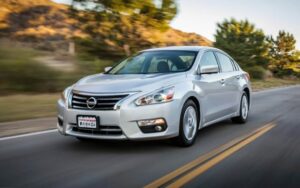Are you unsure about the ideal psi for your 29-inch mountain bike tires? Understanding the importance of tire pressure is crucial for a smooth and efficient ride. Factors such as trail conditions and personal preferences can affect the recommended psi range.
In this article, we will guide you through determining the ideal psi for your 29-inch mountain bike tires and provide tips for maintaining optimal tire pressure.
Get ready to enhance your biking experience with the right tire pressure.
Key Takeaways
- Maintaining correct tire pressure is crucial for optimal performance and safety.
- Terrain, weight, and weather conditions all affect tire pressure for 29-inch mountain bike tires.
- On hardpacked trails, a low psi range (20-25 psi) provides better traction and control.
- On loose or soft trails, a high psi range (35-40 psi) helps prevent tire sinking and reduces the risk of pinch flats.
Understanding the Importance of Tire Pressure
To ensure optimal performance and safety on your 29 inch mountain bike tires, it’s crucial that you maintain the correct tire pressure. Tire pressure plays a vital role in how your bike handles on different surfaces and impacts its overall performance.
When the tire pressure is too low, the tire will feel sluggish and can easily pinch or puncture. On the other hand, if the tire pressure is too high, it can lead to a harsh ride and decrease traction, especially on rough terrains.
To determine the correct tire pressure for your 29 inch mountain bike tires, refer to the manufacturer’s guidelines or consult a bike mechanic. Remember to regularly check and adjust the tire pressure to ensure a smooth and safe riding experience.
Factors That Affect Tire Pressure for 29-Inch Mountain Bike Tires
Factors that affect the tire pressure of your 29-inch mountain bike tires include the terrain you’re riding on, your weight, and the weather conditions. These factors interact to determine the optimal tire pressure for your ride.
Firstly, the terrain you ride on plays a significant role in determining tire pressure. For rough and rocky trails, a higher tire pressure is recommended to prevent pinch flats and improve rolling efficiency. On the other hand, for smoother and more technical trails, lower tire pressure can enhance traction and improve ride comfort.
Secondly, your weight affects tire pressure. Heavier riders typically require higher tire pressures to prevent bottoming out and maintain optimal performance. Lighter riders, on the other hand, can afford to run lower tire pressures for improved traction and a smoother ride.
Lastly, weather conditions also impact tire pressure. In colder temperatures, tire pressure tends to decrease, so it’s important to check and adjust accordingly. Conversely, in hotter temperatures, tire pressure can increase, so regular monitoring is essential.
Considering these factors will help you determine the appropriate tire pressure for your 29-inch mountain bike tires, ensuring a safer and more enjoyable ride.
Recommended Psi Range for Different Trail Conditions
How do different trail conditions impact the recommended psi range for your 29-inch mountain bike tires? The ideal tire pressure for your mountain bike depends on the type of trail you’ll be riding on. Here are two sub-lists outlining the recommended psi range for different trail conditions:
On Hardpacked Trails:
- Low psi range (20-25 psi): Provides better traction and control on hardpacked trails.
- Benefits: Allows your tires to conform to the terrain, enhancing grip and reducing bounce.
On Loose or Soft Trails:
- High psi range (35-40 psi): Helps prevent tire sinking into soft surfaces.
- Benefits: Provides better rolling efficiency and reduces the risk of pinch flats.
By adjusting your tire pressure according to the trail conditions, you can optimize your riding experience and enhance your performance.
Now let’s move on to the next section to learn how to determine the ideal psi for your 29-inch mountain bike tires.
How to Determine the Ideal Psi for Your 29-Inch Mountain Bike Tires
Determine the ideal psi for your 29-inch mountain bike tires by considering key factors.
The optimal psi for your tires depends on various factors such as rider weight, trail conditions, and personal preference.
To find the right psi, start by considering your weight. Heavier riders generally require higher psi to prevent pinch flats and ensure better traction.
Next, take into account the trail conditions you’ll be riding on. For smoother trails, a lower psi can provide better traction and a more comfortable ride. On the other hand, rougher and rockier terrains may require a higher psi for added stability and protection against flats.
Lastly, personal preference plays a role, as some riders prefer a firmer or softer tire feel. Experiment with different psi levels to find the ideal balance of grip, stability, and comfort for your 29-inch mountain bike tires.
Tips for Maintaining Optimal Tire Pressure for a Smooth Ride
To maintain a smooth ride, it’s important to properly maintain the optimal tire pressure for your 29-inch mountain bike tires. Here are some tips to help you achieve this:
- Regularly check your tire pressure using a reliable gauge to ensure it’s within the recommended range.
- Adjust the tire pressure based on the terrain you’ll be riding on. Lower pressures are suitable for rough trails, while higher pressures are better for smoother surfaces.
- Be mindful of temperature changes as they can affect tire pressure. For example, colder temperatures can cause the pressure to decrease, so make adjustments accordingly.
- Inspect your tires for any signs of damage or wear, such as cracks, cuts, or excessive tread wear. Replace any damaged tires promptly to maintain optimal performance and safety.
- Consider investing in a high-quality floor pump with a pressure gauge for accurate and convenient tire inflation.
Frequently Asked Questions
Can I Use the Same Tire Pressure for Both Front and Rear Tires on My 29-Inch Mountain Bike?
You should adjust the tire pressure according to the terrain and your personal preference. However, it is generally recommended to have a slightly higher tire pressure for the rear tire to enhance traction and control.
Is It Necessary to Adjust Tire Pressure Based on My Weight and the Weight of My Gear?
Adjusting tire pressure based on your weight and the weight of your gear is necessary for optimal performance on your 29-inch mountain bike. It ensures better traction, control, and comfort during your rides.
Can I Use a Higher Tire Pressure Than Recommended for Better Rolling Resistance on Smooth Trails?
You can use a higher tire pressure than recommended for better rolling resistance on smooth trails. However, it’s important to find the right balance to avoid a harsh ride and potential loss of traction on rough terrain.
What Are the Signs of Having Too Low or Too High Tire Pressure on My 29-Inch Mountain Bike?
Having too low or too high tire pressure on your 29-inch mountain bike can cause issues. Signs of low pressure include sluggish handling and increased risk of pinch flats. Signs of high pressure include decreased traction and a harsh ride.
Are There Any Specific Tire Pressure Recommendations for Riding in Wet and Muddy Trail Conditions?
In wet and muddy trail conditions, it is recommended to lower your tire pressure for better traction and control. Experiment with different pressures, but be careful not to go too low and risk damaging your rims.
Conclusion
In conclusion, understanding the importance of tire pressure and its impact on your 29-inch mountain bike is crucial for a smooth and safe ride.
Factors such as trail conditions and personal preferences play a role in determining the ideal PSI range for your tires.
By regularly checking and adjusting your tire pressure, you can maintain optimal performance and enjoy a more enjoyable biking experience.
Remember to follow recommended guidelines and consult with experts if needed.




